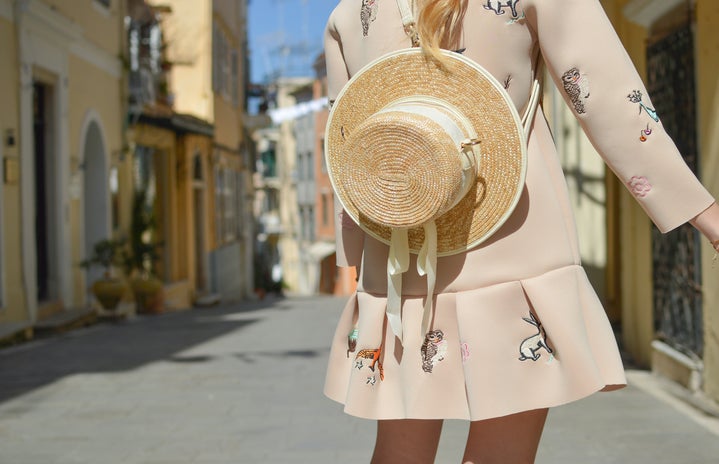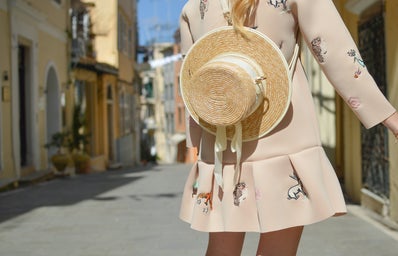I’ve always had a love for fashion and the finer things in life (clothes, shoes, accessories, basically anything I could style). I spent the majority of my education before college wearing a uniform, which I can affirm was anything but fashionable. It wasn’t until college that I truly understood the significance of self-expression through fashion that had been missing from my life for the past 18 years. Attending one of the most diverse universities in the nation has enabled me to see how people present their identity through their attire and has inspired me to enhance my basic white girl wardrobe. Since we’re celebrating Hispanic Heritage Month, I wanted to share some of my favorite fashion trends with Hispanic origins.
- Espadrilles
-
Espadrilles are the perfect slip-on shoes, with a sole made from esparto rope. Esparto fiber is flexible and durable, making it the perfect textile to create sandals. These casual, lightweight shoes attribute their roots to 14th century Spain and continue to be worn by all genders. If you’re interested in purchasing authentic espadrilles made in Spain, DIEGOS has what you’re looking for.
- Ruffles
-
Did you know that this playful detail dates back to 16th century Spain? Follow up, did you know that men were the first to rock ruffles? At the time, Spanish soldiers would slash the top layer of their sleeves to reveal the fabric underneath. Ultimately, this led to clothing constructed in a similar manner, with the addition of a string that would make the fabric ruffle. Though a more popular style that’s incorporated into women’s fashion, I personally think it’s time to see the return of men in ruffles. Who’s with me?
- Embroidery
-
Though the earliest discoveries of embroidery trace back to ancient China, Hispanic countries have played an integral role in the creation and uprising of this intricate trend. In Oaxaca, Mexico, it was very common for embroidery to be done with the tip of the maguey or agave plant. A group located in the city, also known as Tzjon Non, which translates to “people of the textiles,” are known for embroidering their dreams and wisdom spanning across a traditional dress called the Huipil. All of these dresses are unique, with no two exactly the same.
- The color black
-
Under the reign of King Philip II, Spain set the trend for the majority of Europe and “dressing up like a Spaniard” was desirable. As a result, the color black became the color of supreme elegance. Before the discovery of America, wearing black was seen as a status symbol and an indication of wealth since it was a challenging color to maintain. When the Spaniards arrived in the New World, they discovered a plant that made it possible to obtain an intense and long-lasting black colour. King Philip decided that black was “in” in order to sell the black dye and collect large sums for the Spanish Crown. If you weren’t wearing black, you were out! When I think of Hispanic fashion, I think of bright, bold clothing, so learning this was quite the shocker.
Hispanic Heritage Month is a great time to draw inspiration from the styles invented and worn by Hispanic people. We mustn’t forget it’s important that we learn to appreciate culture and not appropriate. Others’ culture is not your costume. Purchasing clothing or accessories that may have important cultural significance to that particular culture, but simply using it as a fashion statement is appropriation. On the other hand, putting in the effort to learn about that particular culture and being mindful about your choices is a step in the right direction towards cultural appreciation.

